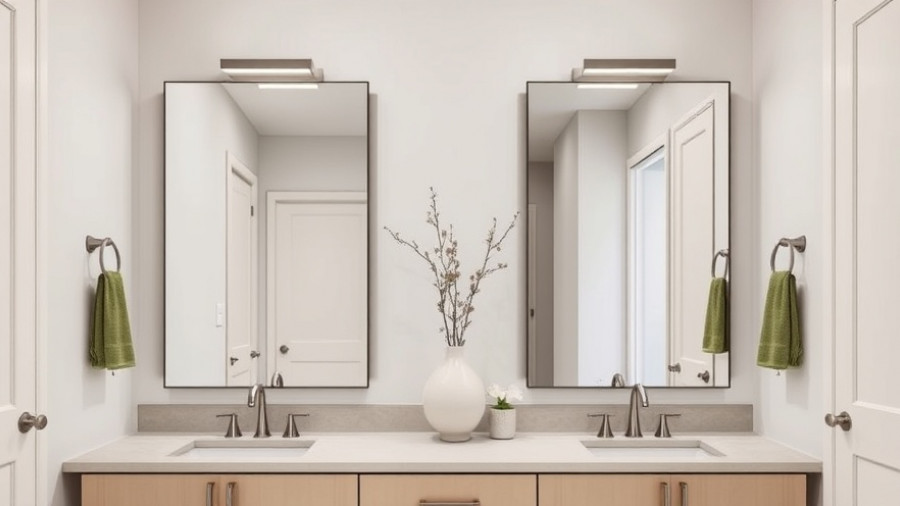
Understanding the Temperature Discrepancies in Your Home
Have you ever entered a cozy kitchen only to feel a bone-chilling wave hit you as you step into the adjacent living room? Or noticed that a spare room feels warmer than your master bedroom? You're definitely not alone in experiencing these frustrating temperature imbalances—especially in multi-story homes where different rooms can fall into a temperature tug-of-war. Let's explore the reasons behind these disparities and practical solutions to create a comfortable environment throughout your home.
Why Does Temperature Inequality Occur?
The most common reason for varying temperatures is simple: heat rises. In homes with multiple floors, upper rooms become warmer as heat accumulates, especially during summer months. Additionally, sunlight streaming through large windows can significantly heat particular spaces, leaving others cold and neglected. Poor insulation exacerbates these issues, allowing hot or cold air to escape from less protected areas of your home.
The Role of Insulation in Temperature Control
How well your home retains heat largely depends on the quality of insulation. Outdated or insufficient insulation can leave your home vulnerable to external temperature fluctuations. This is particularly true for finished attics, rooms over garages, or poorly insulated walls. If rooms feel abnormally cold in winter or too warm in summer, inspecting your insulation should be high on your list of priorities.
Ductwork Matters: An Overlooked Issue
Another culprits behind temperature discrepancies can be flawed ductwork. If ducts have leaks, the heated or cooled air may escape into unconditioned spaces like attics, making it difficult for certain rooms to achieve a comfortable temperature. Proper duct sizing also plays a crucial role—underpowered systems won't provide adequate air flow, causing discomfort. Identifying and rectifying these issues can lead to notable enhancements in your indoor climate.
Enhancing Air Circulation: The Key to Comfort
Sometimes, the challenge isn’t just about temperature control but rather about how effectively air circulates through your home. Poor air movement can lead to stuffiness or unwarranted temperature extremes. Strategic placement of furniture away from vents, ensuring air returns are not blocked, and occasionally adjusting the fan settings on your HVAC system, can help achieve a more balanced airflow throughout your rooms.
Practical Solutions to Consider
- Upgrade Your HVAC System: If your current setup is outdated or poorly sized, consider investing in a variable-speed HVAC system. These systems adjust their capacity based on current conditions, promoting even temperature distribution.
- Adding Return Air Drops: Increasing the number of return air drops can address air circulation issues and aid in moving conditioned air effectively throughout your home.
- Air Sealing: Sealing air leaks around doors, windows, and ductwork can drastically improve your home's energy efficiency, helping to stabilize room temperatures.
- Conduct a Home Energy Audit: This expert evaluation can help identify not only insulation deficiencies and air leaks but also highlight inefficient HVAC operations. It’s a valuable first step toward achieving more uniform temperatures.
The Benefits of Taking Action
Addressing your home's temperature inconsistencies isn’t just about comfort; it can also lead to better energy efficiency and lower utility bills. As you implement solutions, you’ll find not only a more balanced environment but also enhanced safety and health benefits through better air quality. So whether it's simply adjusting a few things on your thermostat or considering more significant alterations to your home structure, every little bit counts in the quest for a cozy home.
If you’re ready to tackle those pesky temperature imbalances or wish to learn more about the best solutions for your space, reach out to a professional for a home energy audit today!
 Add Row
Add Row  Add
Add 




Write A Comment